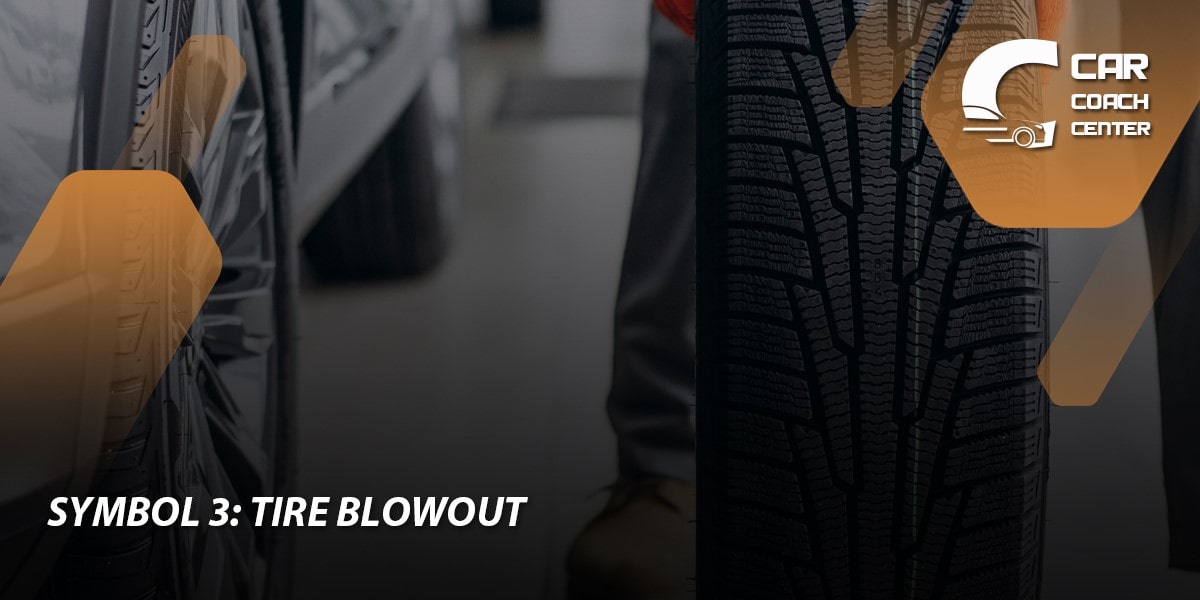Introduction to kia dash symbols
Welcome to Car Coach Center’s comprehensive guide on Kia dash symbols. In this article, we will delve into the world of dashboard indicator lights in Kia vehicles, decoding their meanings, providing troubleshooting tips, and offering preventive measures to keep your Kia running smoothly.
Whether you’re a Kia owner or simply seeking to enhance your knowledge, this guide will equip you with the necessary information to understand and address dash symbols effectively.

Introduction to Car Coaching and Car Problems
Car Coach Center: Empowering Car Owners
Car coaching: Navigating Car Problems with Confidence
The Importance of Timely Resolution for Common Car Problems
Car problems can be frustrating and overwhelming, affecting both your driving experience and safety. That’s where Car Coach Center comes in. Our goal is to empower car owners with knowledge, guidance, and effective solutions to tackle car problems confidently and efficiently.
Overview of Kia Dash Symbols: Decoding the Dashboard Indicator Lights
Understanding Dashboard Indicator Lights
The Significance of Dashboard Indicator Lights in Kia Vehicles
Dashboard indicator lights serve as vital communication tools between your vehicle and you, alerting you to potential issues that require attention. In Kia vehicles, these symbols are designed to provide specific information about the car’s systems, ensuring optimal performance and safety.
Kia Dash Symbols: Meaning and Interpretation
Engine Malfunction Symbols
Symbol 1: Engine Malfunction
Possible Causes: Issues with the fuel system, ignition system, or emissions control system.
Recommended Actions: Have the engine diagnosed by a qualified technician to identify and resolve the underlying problem promptly.
Symbol 2: Oxygen Sensor Malfunction
Possible Causes: Faulty oxygen sensor or problems with the exhaust system.
Recommended Actions: Seek professional diagnosis and replace the oxygen sensor if necessary.
Symbol 3: Catalytic Converter Issue
Possible Causes: Catalytic converter failure or inefficiency.
Recommended Actions: Have the catalytic converter inspected and replaced if needed to prevent further damage.
Transmission Symbols
Symbol 1: Transmission Overheating
Possible Causes: Insufficient transmission fluid, heavy loads, or towing.
Recommended Actions: Check the transmission fluid level and quality, and address any leaks or cooling system issues.
Symbol 2: Transmission Fluid Low
Possible Causes: Leaks, worn seals, or inadequate maintenance.
Recommended Actions: Check the transmission fluid level and top up if necessary, while addressing any leaks or mechanical issues.
Symbol 3: Transmission Malfunction
Possible Causes: Faulty sensors, solenoids, or internal mechanical problems.
Recommended Actions: Seek professional diagnosis to identify the specific issue and perform the necessary repairs.

Symbol 1: Brake Fluid Low
Possible Causes: Brake fluid leaks or worn brake pads.
Recommended Actions: Check the brake fluid level, inspect the brake system for leaks, and replace brake pads if necessary.
Symbol 2: ABS System Malfunction
Possible Causes: Sensor issues, hydraulic problems, or electrical faults in the ABS system.
Recommended Actions: Have the ABS system diagnosed and repaired by a qualified technician.
Symbol 3: Parking Brake Engaged
Possible Causes: Parking brake left engaged or a malfunction in the parking brake system.
Recommended Actions: Release the parking brake and check for any underlying issues with the system.
Electrical System Symbols
Symbol 1: Battery Charge Low
Possible Causes: Battery issues, alternator problems, or electrical system malfunctions.
Recommended Actions: Check the battery connections, test the battery and alternator, and address any electrical system faults.
Symbol 2: Alternator Malfunction
Possible Causes: Faulty alternator, loose belts, or wiring problems.
Recommended Actions: Test the alternator and associated components, and replace or repair as necessary.
Symbol 3: Faulty Wiring
Possible Causes: Damaged wiring, loose connections, or electrical system malfunctions.
Recommended Actions: Inspect the wiring harnesses, connectors, and fuses for any issues. Repair or replace damaged wiring as needed.
Tire and Pressure Monitoring Symbols
Symbol 1: Tire Pressure Low
Possible Causes: Underinflated tires, tire punctures, or faulty tire pressure monitoring system (TPMS).
Recommended Actions: Check tire pressure, inflate tires to the recommended levels, and repair or replace damaged tires. Have the TPMS inspected if necessary.
Symbol 2: Tire Pressure Monitoring System Malfunction
Possible Causes: TPMS sensor failure or system malfunction.
Recommended Actions: Have the TPMS system diagnosed and repair or replace faulty components as needed.
Symbol 3: Tire BlowContinuation:

Symbol 3: Tire Blowout
Possible Causes: Sudden tire failure due to excessive wear, low tire pressure, or road hazards.
Recommended Actions: Safely pull over, assess the tire damage, and replace the affected tire immediately.
Steering System Symbols
Symbol 1: Power Steering Malfunction
Possible Causes: Low power steering fluid, a faulty power steering pump, or steering system leaks.
Recommended Actions: Check the power steering fluid level, inspect for leaks, and address any issues with the power steering system.
Symbol 2: Steering Wheel Lock
Possible Causes: Incorrect key usage, steering column issues, or ignition system problems.
Recommended Actions: Ensure the correct key is used and try turning the steering wheel while gently turning the ignition key.
Symbol 3: Steering System Overheating
Possible Causes: Continuous heavy steering, power steering fluid issues, or problems with the cooling system.
Recommended Actions: Allow the steering system to cool down, check power steering fluid levels, and inspect the cooling system for any malfunctions.
Fluid Level and Temperature Symbols
Symbol 1: Engine Coolant Temperature High
Possible Causes: Insufficient coolant, cooling system leaks, or a malfunctioning thermostat.
Recommended Actions: Check the coolant level, inspect for leaks, and ensure the radiator fan is functioning correctly. Seek professional assistance if necessary.
Symbol 2: Windshield Washer Fluid Low
Possible Causes: Insufficient washer fluid or a malfunctioning washer fluid level sensor.
Recommended Actions: Refill the windshield washer fluid reservoir to the recommended level and inspect the sensor if the issue persists.
Symbol 3: Engine Oil Pressure Low
Possible Causes: Low engine oil levels, oil pump failure, or oil system blockages.
Recommended Actions: Check the engine oil level and top up if necessary. If the problem persists, have the oil pressure system inspected and repaired.

Diagnostic Process for Kia Dash Symbols
Understanding the On-Board Diagnostics (OBD) System
Introduction to the On-Board Diagnostics System
How the OBD System Assists in Identifying Dash Symbol Issues
OBD-II Scanner: Functionality and Benefits
Exploring the Functionality of OBD-II Scanners
Advantages of Using OBD-II Scanners for Dash Symbol Diagnosis
Interpreting OBD-II Trouble Codes for Dash Symbols
Understanding OBD-II Trouble Codes and their Significance
Decoding Trouble Codes to Identify Specific Dash Symbol Issues
Common Dash Symbols in Kia Vehicles
Symbol 1: [Symbol Name]
Detailed Description and Meaning of Symbol 1
Steps to Address the Symbol and Potential Solutions
Symbol 2: [Symbol Name]
In-depth Explanation and Interpretation of Symbol 2
Troubleshooting Tips and Recommended Actions
Symbol 3: [Symbol Name]
Comprehensive Analysis of Symbol 3 and Its Significance
Common Causes and Effective Strategies for Resolving the Symbol
Symbol 4: [Symbol Name]
Detailed Overview of Symbol 4 and Its Implications
Diagnostic Procedures and Recommended Approaches for the Symbol
Symbol 5: [Symbol Name]
Understanding the Meaning and Impact of Symbol 5
Addressing the Symbol Through Proper Diagnosis and Repair

Car Coaching Techniques for Dash Symbols
Empowering Car Owners to Troubleshoot Dash Symbols
– Understanding the Basics of Troubleshooting Dash Symbols
– Step-by-Step Guide for DIY Troubleshooting Techniques
Knowing When to Seek Professional Assistance
– Recognizing Complex Issues Requiring Expert Intervention
– The Benefits of Consulting Car Coach Center’s Expert Technicians
Importance of Regular Maintenance and Preventive Measures
– The Role of Regular Maintenance in Preventing Dash Symbol Activations
– Essential Preventive Measures to Keep Your Kia Running Smoothly
Tips for Preventing Dash Symbol Activations
Regular Vehicle Inspections and Maintenance
– Importance of Regular Inspections for Early Detection of Issues
– Key Maintenance Practices to Prevent Dash Symbol Activations

Proper Driving Habits and Techniques
– Safe Driving Practices to Preserve Vehicle Health
– How Driving Habits Impact Dash Symbol Activation
Monitoring Fluid Levels and Tire Pressure
– The Impact of Proper Fluid Levels and Tire Pressure on Dash Symbols
– Tips for Maintaining Optimal Fluid Levels and Tire Pressure
Conclusion
In conclusion, Car Coach Center’s comprehensive guide has provided you with valuable insights into Kia dash symbols. By understanding the meanings behind these symbols, utilizing troubleshooting techniques, and implementing preventive measures, you can confidently address dash symbol issues and ensure the longevity and performance of your Kia vehicle.
Remember, carcoachcenter.com is here to support you with expert advice and assistance every step of the way. Drive with confidence and enjoy a hassle-free experience on the road.
FAQ
How can I understand the meaning of Kia dash symbols?
This article decodes Kia dash symbols, providing detailed explanations and potential solutions for each symbol.
Is it possible to troubleshoot Kia dash symbols on my own?
Yes, the article offers troubleshooting tips and techniques for car owners to address dash symbol issues confidently.
Why is regular maintenance important in preventing dash symbol activations?
Regular maintenance helps detect and address potential issues early, reducing the likelihood of dash symbol activations in Kia vehicles.


